In this guide, we’d like to outline 5 different factors to look for when choosing for your first or next road bike.
Different people, cycling in different environments, will probably have their own unique requirements from a road bike, so it is almost never a one-size-fits-all process.
A good road bike is never cheap and is thus a big investment, so we hope this guide will give you enough practical advice to enable you to choose a road bike with the best design elements for your needs.
In this post, we’ll discuss the following design elements of road bikes:
- Brakes
- Wheel size
- Gear system
- Handlebar design
- Frame material
1) The Right Brakes for your Road Bike
With so much in this guide focusing on attaining the fastest possible speeds, it’s necessary to cover the best braking systems for different riders’ needs.
There’s no point in buying and setting up the fastest bike in the world if you can’t slow down when you need to.
There are numerous options when it comes to brakes, and we could write an entire separate guide about bike breaks, but we’ll distil this subject down, a little crudely, into two categories: brakes for wet and otherwise bad weather, and brakes that require almost no maintenance.
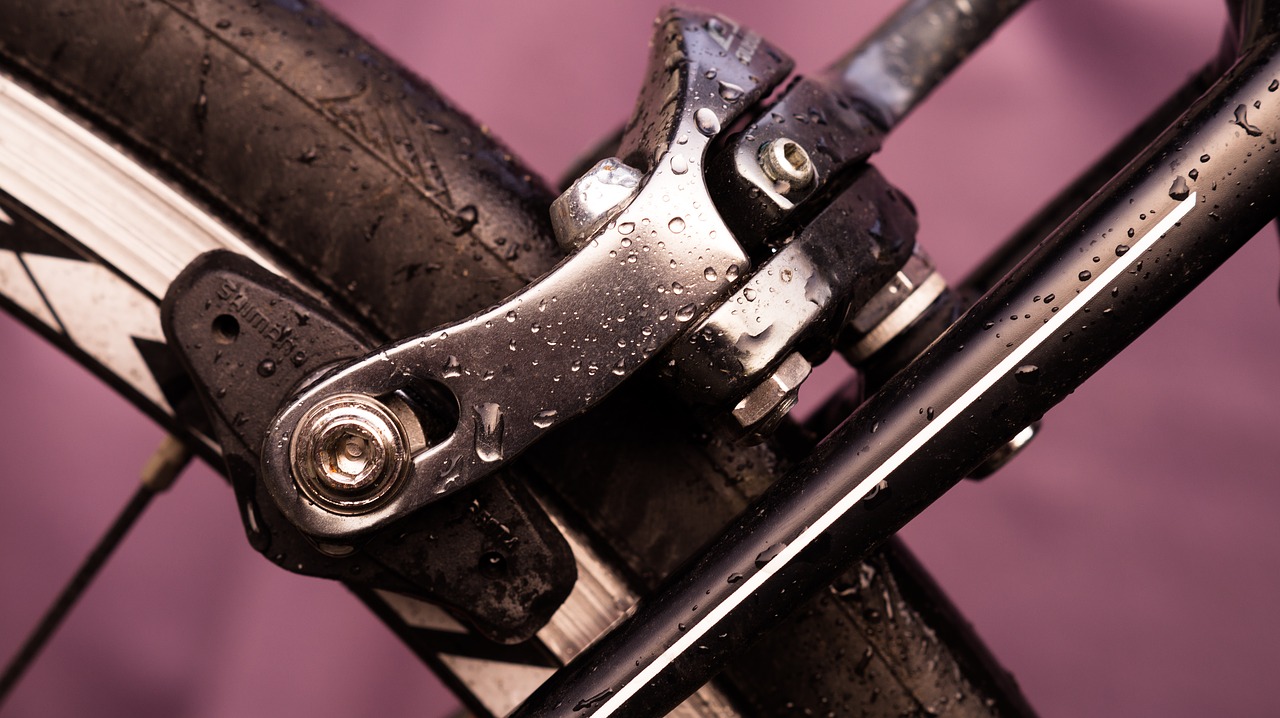
Brakes for wet and otherwise bad weather
Disc brakes are the best option for anyone who lives in a particularly wet climate as they work well in all weather conditions.
Disc brakes come in two main forms: cable disk brakes and hydraulic disc brakes.
Whilst hydraulic disc brakes offer greater control, they are a little more difficult to maintain, so we’d recommend cable disc brakes if you don’t want to spend more time and energy looking after them and tuning your bike.
This leads nicely to the next brake category…
Brakes that require zero upkeep
If you have no inclination or intention to tinker with your road bike, then you’ll probably want a brake system that requires no upkeep.
If this sounds ideal, then you may like to opt for drum brakes on your next road bike. Drum brakes are fully sealed and integrated into the rear wheel hub; this means that they are completely protected from water, mud, dust, etc.
This means that drum brakes are ideal for people who use their bikes constantly — perhaps for a commute — and need the toughest brake system there is.
The only downside of drum brakes is that they lack the stopping power of disc brakes and may not be ideal for people who live in very hilly areas, as they will probably need the biggest, strongest braking system available.
Additional note – Rim Brakes
Rim brakes are another option for your next road bike, but they don’t fit into either of the sections above.
Rim brakes provide a lot of control, but not quite as much control as disc brakes. However, they have a less complex mechanism than disc brakes, so they are easier to tinker with and fix if something goes wrong.
That said, rim brakes aren’t nearly as effective in wet weather as drum brakes or disc brakes, so only choose this option if you live in a relatively dry area.
2) The Perfect Wheel Size for your Road Bike
A road bike’s thin wheels are perhaps its most distinctive features, but a wheel’s overall diameter is also an important factor and your choice of wheel diameter could greatly impact how you ride your bike.
As with your brake system, you may need to factor in the kind of weather and the terrain you’re most likely to encounter when you cycle.
There are various different wheel sizes you can expect to find in bike stores, so here’s a rundown of the sizes — and the pros and cons of each size.
Quick note: the ‘c’ used in the size categories of bike wheels, stands for ‘clinchers’, which is a measurement of the diameter of the wheel.
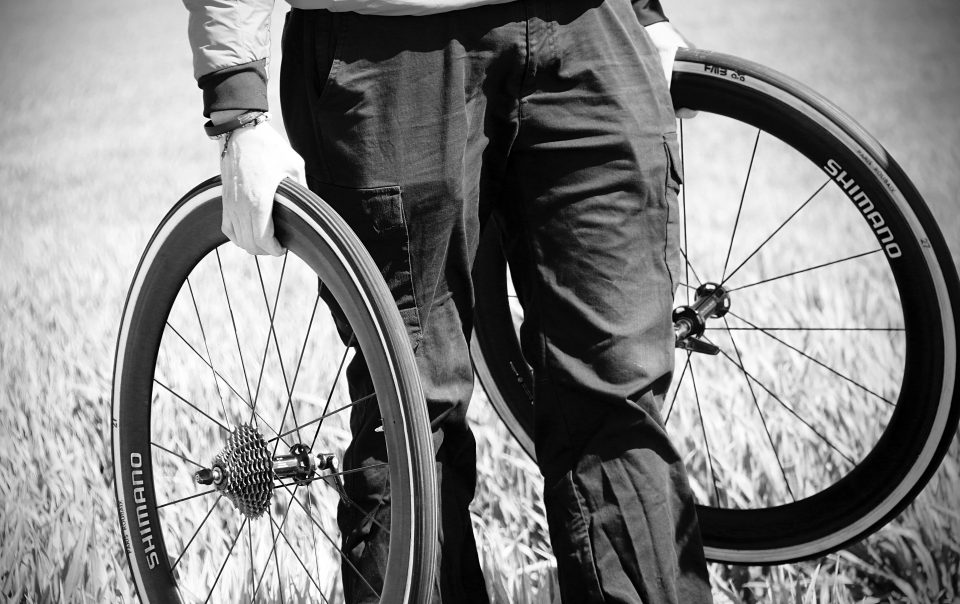
650c or Smaller
Any wheel that is 650c or smaller is ideal for anyone who is shorter than average. Of course, leg length is also a factor, but it’s usually the case that anyone who is 5ft4” or smaller, will need to use 650c or smaller wheels.
You’re going to pay a lot of money for your ideal road bike set-up, so don’t settle for the standard wheel size if you can have a more customised experience.
700c Road Bike Wheels
This is the standard size for road bikes, so if you aren’t looking for the most customised experience and you are of average height, then this is the right option for you.
700c is the standard wheel size because it fits the widest height range of most adults whilst also giving them the right level of force to achieve the fastest speeds on flat roads.
26- to-29-inch Road Bike Wheels
As you start to move beyond the standard wheel size, you add greater control and force at lower speeds.
This is why mountain bike wheels tend to be bigger than road bike wheels. You may like to go to 26 inches+ if you have a lot of hills on your daily commute or you are otherwise looking for a bike that gives you superior balance and control.
Larger wheels also tend to last longer, so it’s a good option if you intend to put your wheels through their paces! The only downside of opting for a larger wheel is that you may find it takes a little longer to build up speed.
Related: The 13 Best Road Bike Under £1,000 for 2019
3) The Perfect Gear System for your Road Bike
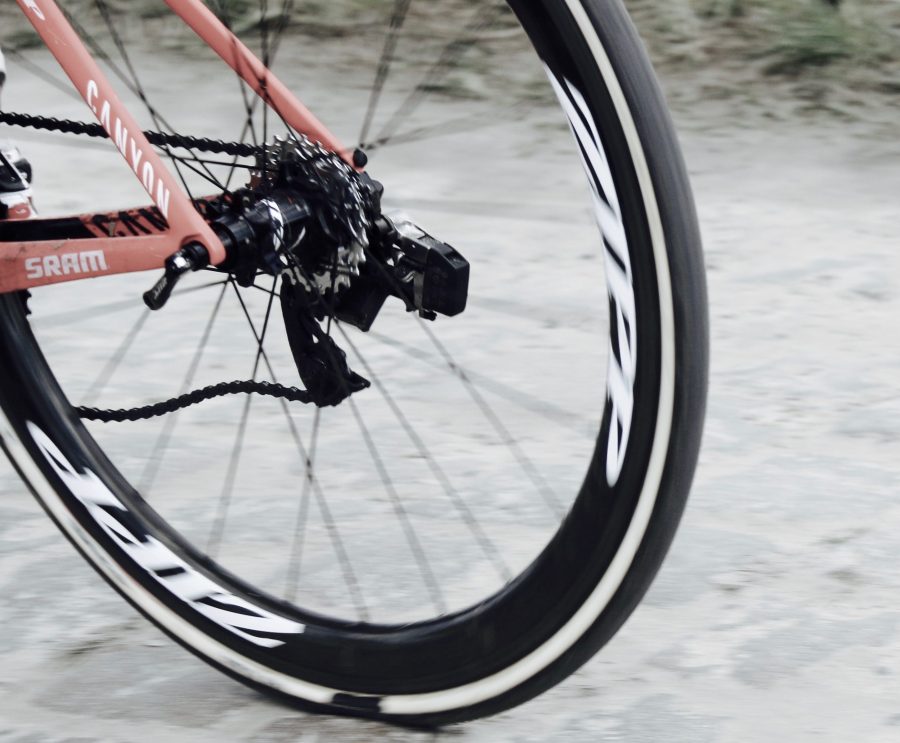
If you want to make an informed decision about which gears system to choose for your road bike, then you should be prepared to do a little research.
We could write an entire guide to figure out the perfect gear system for your road bike, discussing the number of chain-rings, cogs, sprockets, etc. However, that is best left for an in-depth article.
In this guide, we will give an overview of what you should look for in a gear system, without going into too much detail.
Standard road bikes usually have 18-20 gears, but some can have up to 30 gears. As the main objective of road bikes is to maintain top speeds at all times, being able to chop and change between gears helps you adapt to a hill or change of terrain without losing speed.
The main things to consider when choosing your gear system on a road bike is whether you’re a particularly strong cyclist and if the terrain you’re likely to cycle on is particularly hilly.
Gears help cyclists change the power output from their peddling efforts by either tightening or loosening the chain.
Why Choose a System with more than 18 Gears?
Some road bikes offer up to 30 different gears, allowing the cyclist to subtly adjust their gears to suit their requirements.
You should choose a system with as many gears as possible if the terrain you are likely to cycle across is very hilly or it regularly changes between hills and flat stretches. This will allow you to change your bike’s power to suit whichever surface you encounter.
You might also choose a system with a wide choice of gears if you are a relatively new cyclist and perhaps haven’t built up enough power in your legs to handle some of the most challenging hills and terrains.
Having a range of gears will allow you to always choose the optimum gear to suit your legs’ strength level.
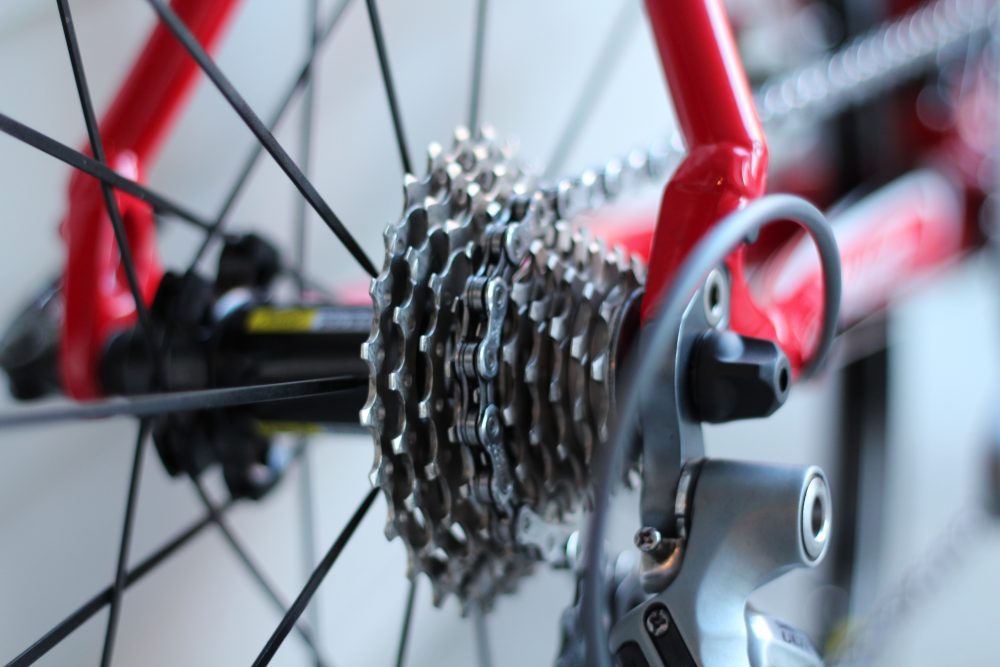
Why Choose a Road Bike with Fewer Gears?
With all of the advantages of choosing a road bike with many gears, you might wonder what the possible advantages are of choosing a bike with fewer gears.
The answer is simple: weight. Complicated gear systems add a lot of weight to your bike, so if you’re determined to keep the weight as low as possible, you may like to opt for a smaller, less complex gear system.
Choosing a Gear System with Lower Gears
The most popular gear system for road cyclists makes use of low gears as they create the maximum amount of power and allow cyclists to move between them whilst maintaining a consistent amount of effort.
If your regular cycling routes are mainly flat and you’re interested in attaining the highest possible speeds for as long as possible, you should opt for lower gears. However, it is not advisable to choose this set-up if you live and cycle in very hilly terrain.
4) The Best Handlebar for Your Road Bike
Another design aspect that sets road bikes apart from mountain bikes and most other types of bikes is the dropped handlebar design.
As we explained earlier in our other post, road bikes have a dropped handlebar to allow the rider to have a lower riding position, creating a more aerodynamic shape and attaining significantly faster speeds as a result.
But there is more to it than that, as different shapes and designs are comfortable (or uncomfortable) for different people (similar to finding the right seat position).
In the worst cases, an ill-fitting handlebar can cause wrist and back pain, and can even contribute to spinal issues further down the line.
If you take the time to find the perfect handlebar for your body and riding style, you’ll be faster and more comfortable. This makes choosing the right handlebar a very important part of your overall road bike setup.

- Dropped handlebars are the standard for road bikes, as they offer greater overall speeds. However, if you have intermittent back problems, dropped handlebars might be a bad option for you, as the riding position puts additional strain on your back.
- Flat handlebars are more common on mountain bikes than road bikes, but if you have regular back problems, it’s worth losing a little speed in favour of comfort. Another benefit of flat handlebars is that the higher riding position allows you to see potential hazards more easily. This is why specialist commuter bikes and hybrid bikes use flat handlebars. Flat handlebars also allow your arms to move up an down a little, absorbing the bumps and shocks from the road, so this might be a good option if you anticipate travelling over bumpy roads on many of your cycling trips.
- Moustache handlebars are somewhere in-between flat and dropped handlebars as they allow the rider to lean forwards or sit higher up, taking the strain off their back. The grip feels a little different with the moustache shape, and the sense of control you have with it isn’t for everyone, as some people feel that a moustache handlebar gives them less control than flat or dropped bars. However, if you’re an experienced cyclist looking for a versatile handlebar option, then a moustache handlebar may be ideal.
Related: The Ultimate Buying Guide to The Best Hybrid Bikes on The Market
5) Lightweight Frame Materials for your Road Bike
The really serious cyclists pay not-so-small fortunes for the lightest, strongest frames modern technology can produce.
If you’re a professional cyclist or you want the professional cyclist’s setup, then you’ll want to maximize the speed possible on your road bike. One of the most effective ways of increasing your speed is to ensure your bike is as light as humanly possible.
There are some space-age materials that are strong enough for the job yet weigh next to nothing. The common trend is that the lighter your bike frame is, the more expensive it is, but there are some more affordable options that are light enough to ensure you can reach some truly impressive speeds on your road bike.
There are countless options, but we’ve distilled the list into the following main four categories:
Carbon Fibre
Carbon fibre is used for many of the best road bike frames because it is lighter than most metals, but still very strong.
It is called ‘carbon fibre’ because it is made from tightly bunched carbon fibres bound together by a strong epoxy resin.
Carbon fibre frames start to get very expensive when they have different thicknesses and properties on different parts of the bikes. This is achieved by lining the fibres in specific directions, making parts of the bike frame stiff, and other parts a little bendy.
This can give the rider more stability or bend a little, taking some of the impacts that a suspension system usually would. A custom-built carbon-fibre frame can be very expensive, but many serious cyclists think it’s worth it!
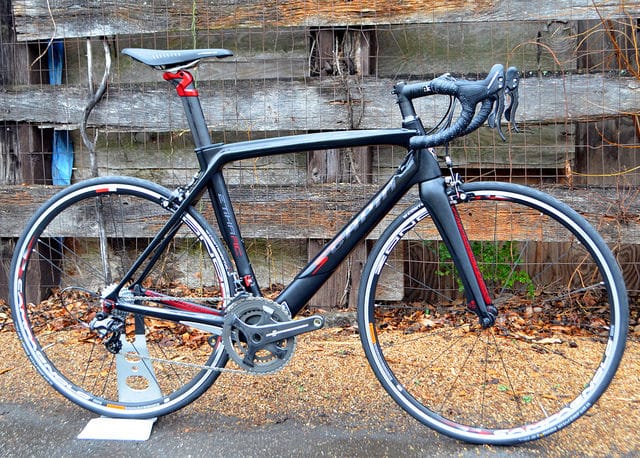
Aluminium Alloy
For a very lightweight, strong material without the higher price tag associated with carbon fibre frames, you can choose an aluminium alloy frame instead.
Many mass-produced road bikes are made of aluminium alloy because it is lighter than steel, never rusts, and it is more than strong enough, despite its light weight.
In the bike industry, often aluminium alloy is just shortened to ‘alloy’, so if you see a frame described as ‘alloy’, it is probably an aluminium alloy.
The downside is that alloy frames can feel a little too hard and stiff for some cyclists’ preferences and the material fatigues, which means that it gradually breaks down.
This means that alloy bikes have a limited usage time of around five years if used regularly.

Steel
Most standard bikes are made from steel, as it is very strong and reasonably cheap to produce.
Another benefit of steel frames is that they have a little more flexibility than aluminium alloy frames, so they won’t feel as hard and the vibrations running through it will be less severe. Although steel can rust, it is relatively easy to look after it to ensure this never happens.
Steel won’t fatigue like aluminium alloy, so a good bike frame could last you a very long time!
The downside is that steel is one of the heaviest materials used in the production of bike frames, so some speed will be lost. However, there are some high-end steel frames that are especially thin and light, but they come with a higher price tag than standard alloy models.
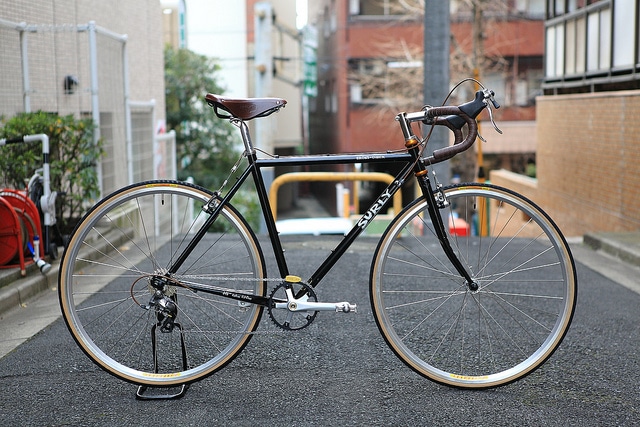
Titanium
Titanium is incredibly strong and it is lighter than pretty much every other material used to make bike frames. A titanium frame doesn’t rust or fatigue over time, which means it will last a lifetime and the firmness makes for a comfortable, responsive road bike. The only downside of titanium frames is the cost.
Titanium bike frames cost a lot to produce because titanium is difficult to work with, so the production costs are very high. However, if you have a small fortune in your pocket and you’re looking for the ultimate road bike, then you should probably choose one with a titanium frame!
That’s all we have time for in this comprehensive road bike guide. We’ve provided you with plenty of information to make a well-informed decision about your next road bike, but please don’t stop researching the topic, as there is always more to learn.
Cycling is an incredibly rewarding activity, and it’s so much better when you have a bike that is perfectly suited to the job and to your specific needs.
Happy cycling!


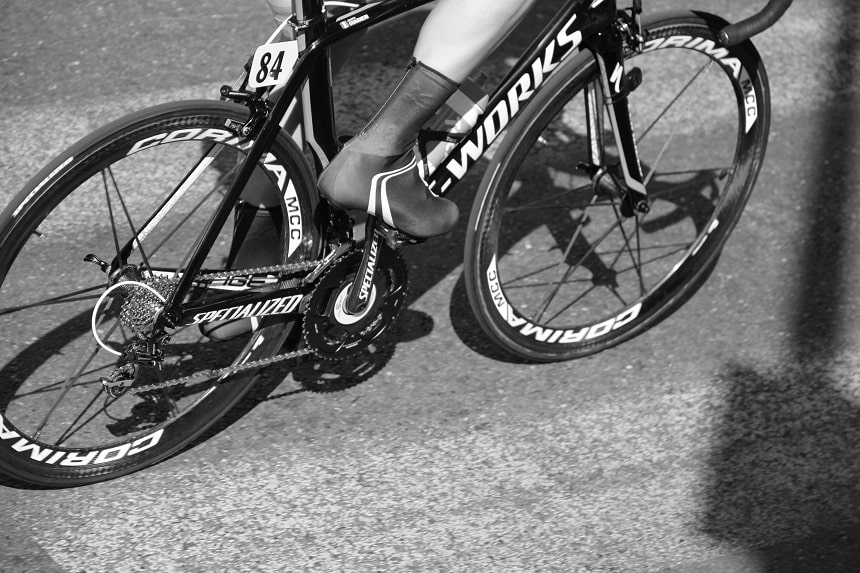
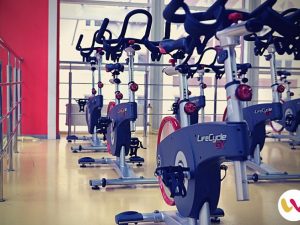
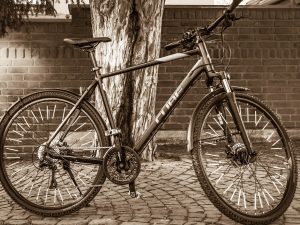




Add Comment